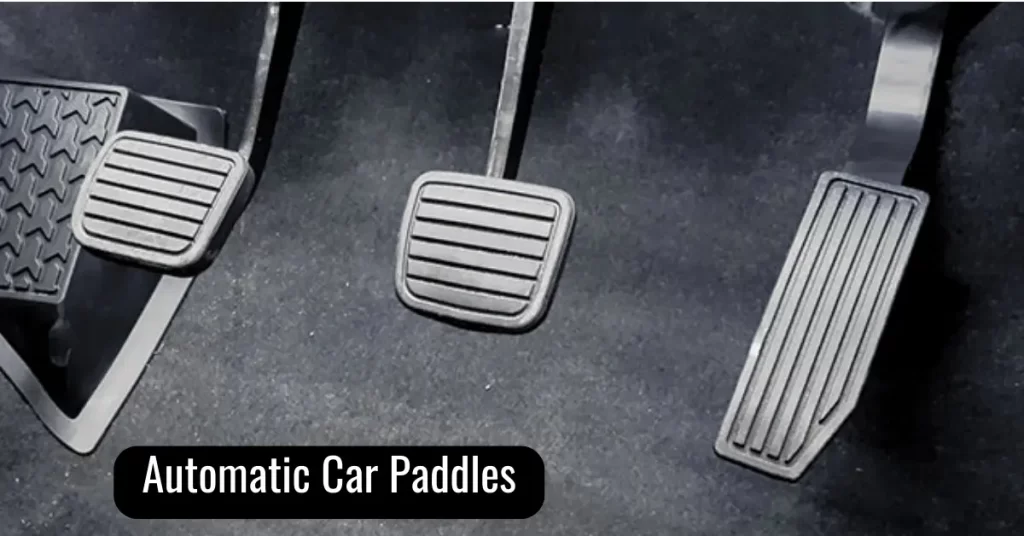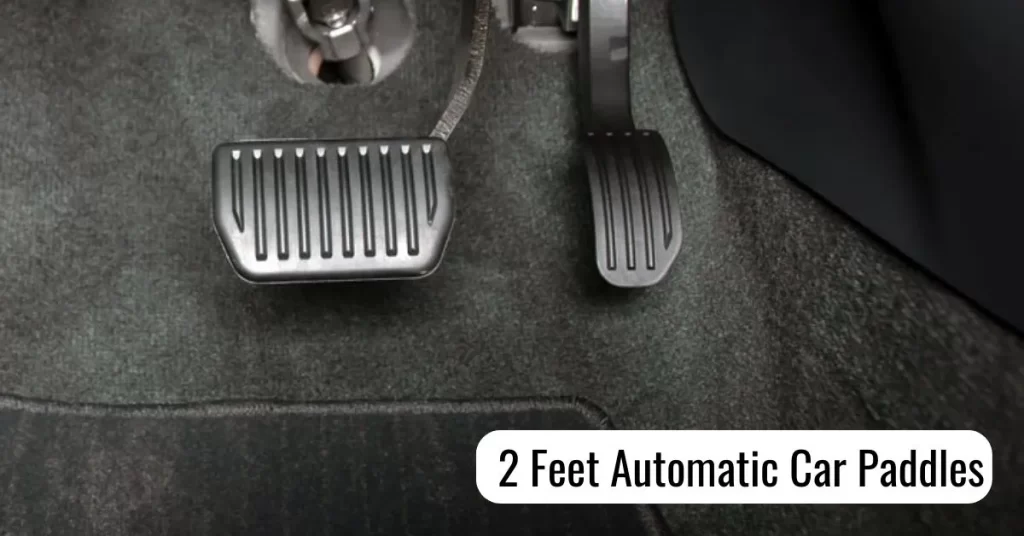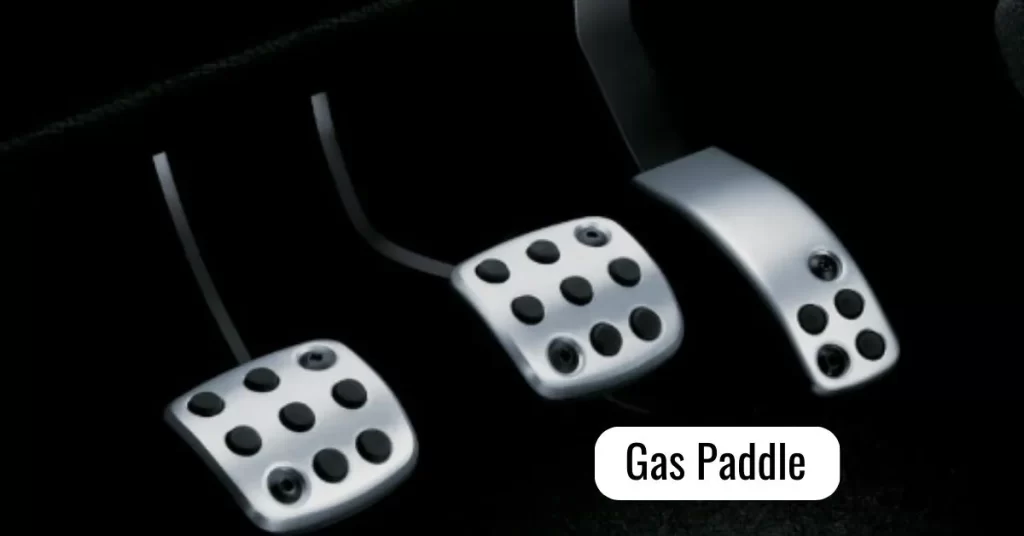Which Pedal Is The Brake In An Automatic Car?
The brake pedal in an automatic car is used to slow down or stop your vehicle. It’s located on the left side of the driver and is easy to recognize due to its distinct shape and size. Depressing this pedal applies pressure to the brakes of your car and halts its forward motion, something that can be handy in emergency situations. An experienced driver knows it’s important to press down slowly so you don’t come to a jerky and abrupt stop and so you don’t skid or lose control of your vehicle.
Have you ever driven an automatic car and still found yourself confused about which pedal is the brake? You’re not alone. Many people who are used to driving manual transmission cars struggle with this question. In this article, we’ll clear up the confusion once and for all and give you a clear answer to the question: Which pedal is the brake in an automatic car?
Table of Contents
How Many Paddles Are In Automatic Cars?
Modern automatic cars typically do not have three pedals like manual transmission cars. The third pedal in an automatic car is known as a dead pedal. This kind of pedal serves no actual function and is only designed to provide a place for the driver to rest their foot when driving in the vehicle. By doing so, it should make longer trips more comfortable, especially if the person’s left foot has nowhere else to go while driving.
To be clear, the dead pedal does not actually move or control any part of the car – it serves only as a visual connection to manual transmission vehicles and as a footrest for those who prefer having one while in transit. While some dead pedals are simply flat pieces of plastic with nothing special about them, some brands offer specific designs that communicate something about the brand and the overall atmosphere of the car itself.

Which Pedal Is The Brake In An Automatic Car?
Which one is the brake pedal is the most common question for every new automatic car owner. In an automatic car, the leftmost pedal is the brake. It looks similar to the accelerator pedal but has a rubber nub on the top of it for extra grip and control. Depending on the make and model of car, it may be labeled as “Brake” or have a symbol next to it indicating that it is the brake pedal. When you press down on this pedal, it will slow the car down and eventually stop it.
When you drive an automatic car, using the brake pedal correctly and safely is important. To use it properly, press down gently with your foot to slow the car’s speed gradually and smoothly. If you need to come to a complete stop quickly, apply more pressure on the brake pedal and hold it there until the car stops completely. It is also important to remember to take your foot off the brake pedal when you want to start moving again, as keeping it pressed down will cause the car to stay still.
Why Can’t You Use Two Feet In Automatic Car?
Driving an automatic car is a great way to ease your commute, but you should always remember only to use one foot when doing so. Using both feet while driving an automatic car can lead to dangerous consequences. The reason for this is that it can be easy to accidentally press both the gas and brake pedals at the same time.
This can cause you to lose control of the car, potentially leading to an accident. If you used both feet when driving a manual transmission car, then this wouldn’t be a problem because the left foot would mostly be used to operate the clutch. However, there’s no need for this with an automatic vehicle since the transmission itself takes care of all the gears.
It’s important not to try and multitask while driving and focus on using one foot instead if you have an automatic vehicle. Having both feet on two different pedals can be dangerous, and it also makes responding quickly in certain situations more difficult. Not only does this affect your safety, but anyone else on the road as well. Therefore, it is important to pay attention not only to yourself but to other drivers too and stick with either your left or right foot when using an automatic car.

Is it Necessary to Press the Brake Pedal to Initiate An Automatic Car?
Automatic cars can be convenient to drive, but it can be confusing to know if you need to push the brake pedal in order to start them. Fortunately, most cars with a special proximity key or push-button start system do not require you to press the brake before the engine will crank. However, some safety-conscious drivers may still feel more comfortable pushing on the brake pedal as an extra precaution.
Still, it should not be necessary for you to worry about the car rolling away unexpectedly – it is likely equipped with a shift lock that prevents any attempt to start when it is not in either Neutral or Park position. It’s also important to note that this feature works differently from one car make and model to another, so make sure you check your owner’s manual first if you plan on using the auto-start function of your vehicle.
Read Another Post: Why Does The Brake Pedal Get Hard When The Car Is Off?
Where is The Gas Paddle?
Knowing the difference between the gas and brake pedals is important when driving a car. One of the biggest differences between the gas and brake pedals is that the gas pedal will go all the way to the floor when you press on it, while the brake pedal, unless it wears out, will stop somewhat in the middle. This allows for easier differentiation when driving.
The brake pedal has a different size than the gas one as well: usually it’s smaller because of its lesser use compared to other pedals in your car. It also has a rubberized coating, which makes it easier to take your foot off without slipping and hitting another pedal by accident.
It is important that you keep track of where your feet are located when pressing either one of these pedals, so make sure you do not confuse them at any given time. If ever in doubt, stay focused on keeping a wide range of pressure through your toes with each depress or release of either of these two pedals.

How do you operate the brake pedal on an automatic car in the U.K.?
- The pedal that is the brake in an automatic car U.K. is the clutch. The clutch is used to disengage the car. The clutch is used to engage the car if a car is neutral.
- In an automatic car, the brake pedal stops the car.
- The gear selector in an automatic will include first and second gears for the driver to select.
- The driver must use a manual override if you need to drive down a steep hill in low gear.
- The brake pedal slows down when driving an automatic car in the U.K.
- Engaging the engine brake will reduce the ability of the car to stop quickly.
- The right foot should be used when braking and the left foot should be used when accelerating.
- In an automatic car, the brake pedal is in the “locked” position, indicating that the brakes are engaged.
- To control speed and save braking, you should select one of the gears (1, 2, or 3) when driving downhill as “locked.”
- Automatics sometimes change gears as you approach a corner due to reduced pressure on the accelerator; this could cause you to take the corner faster than intended.
- For slippery roads, selecting higher gears can be helpful for more traction.
Frequently Asked Questions [FAQs]
1. Which foot do you brake in an automatic car?
When driving an automatic car, you would mostly use the right foot only for braking or accelerating in normal driving conditions, as you would in a manual vehicle. However, if you need to maneuver, it is OK to use both feet lightly: left on the brake and right on the gas.
2. What are the 3 pedals in an automatic car?
Typically, two: Accelerator and Brake. Some older cars had a third pedal used for setting the parking brake. Technically, the flat spot where you rest your left foot is called the dead pedal.
3. Which one is the brake and gas pedal?
So, for cars in the U.S., you’ll probably notice two pedals below the driving wheel. The one on the left, the skinny one, is going to be your gas pedal. The gas pedal gives your engine gas, making the car go faster. The larger one on the right will be your brake pedal.
4. Is it OK to use your left foot to brake?
Left-foot braking benefits those who want to save a very small amount of time, better control the car’s weight transfer, and keep up their speed. Of course, the typical driver can make it through life without knowing how to do it, but it’s a useful (if not necessary) skill for racers to hone.
5. What is the purpose of a third pedal in an automatic car?
It’s the third pedal that you have to press in order to change gears. However, you might not know exactly what the clutch does, especially if you’ve only driven cars with automatic transmissions.
Conclusion
The automatic car pedals in the U.K. are the clutch. The purpose of the third pedal in an automatic car is to change gears, and it is not necessary to use both feet when driving an automatic car as long as you keep your feet aligned on the pedals. It’s also important to remember that pressing down on the gas pedal will make the car go faster, and pressing down on the brake pedal will slow it down. I hope i have clear out all you which pedal is the brake in an automatic car questions vary clearly.
